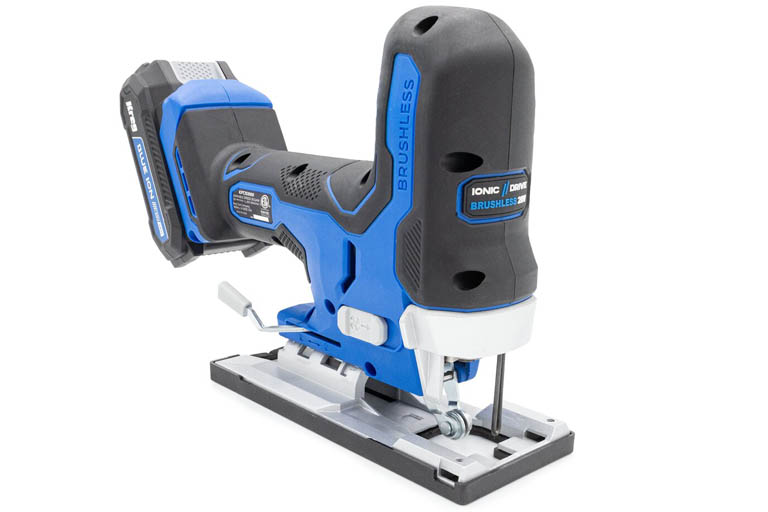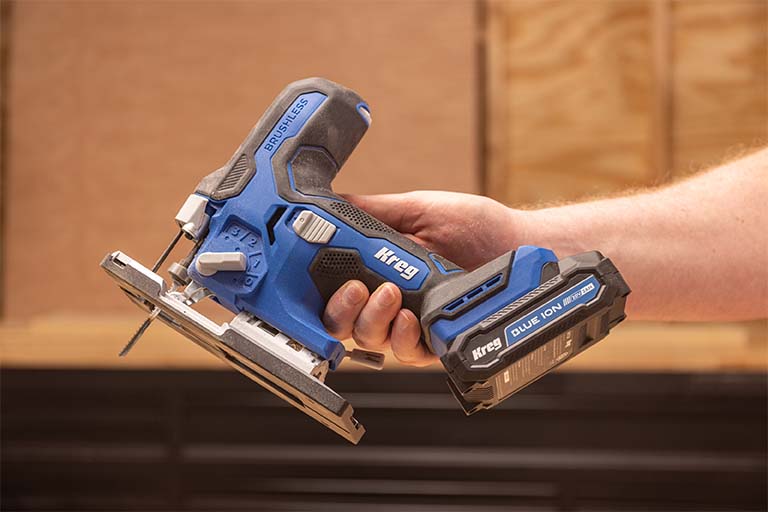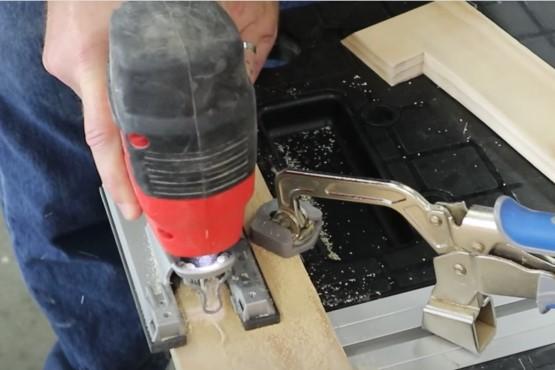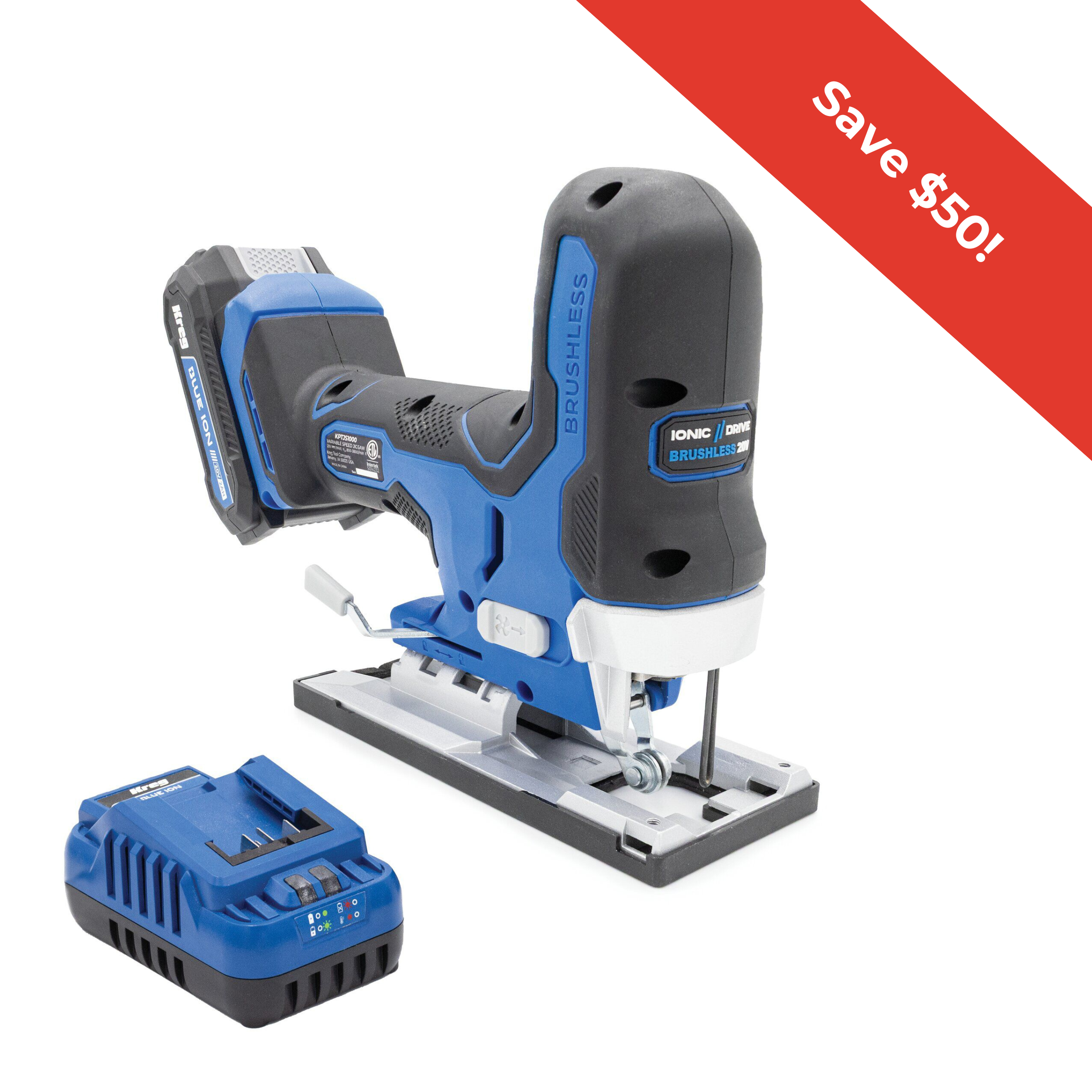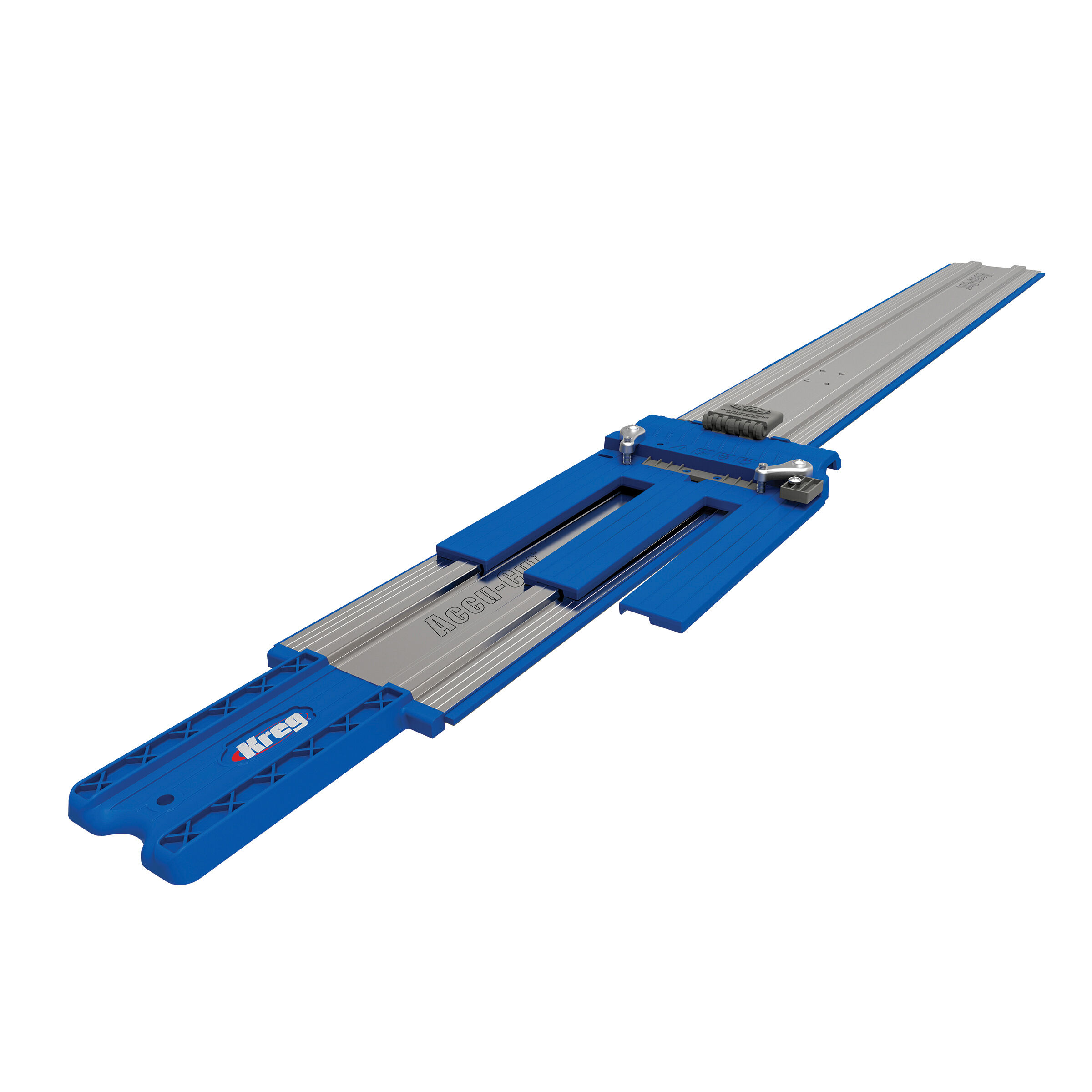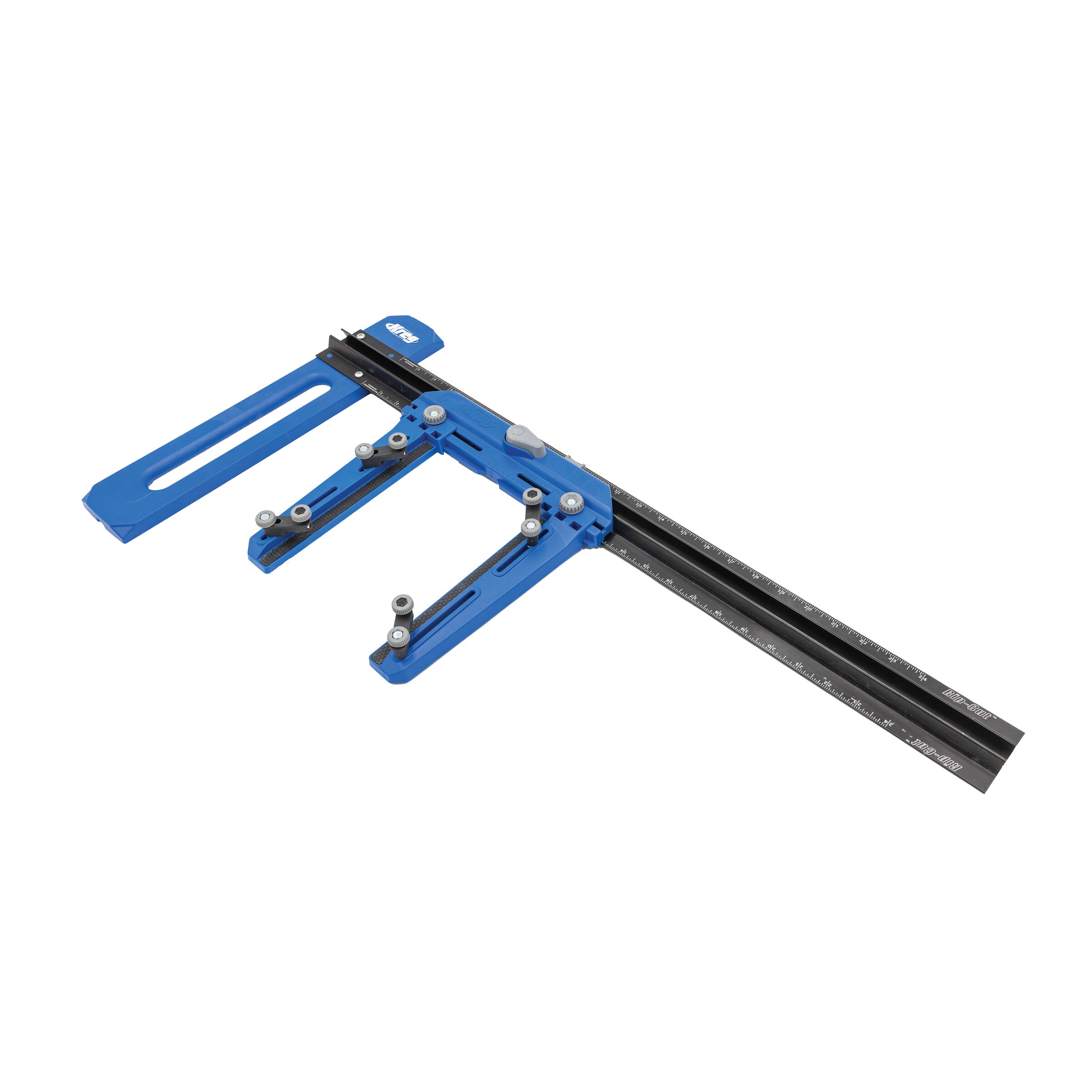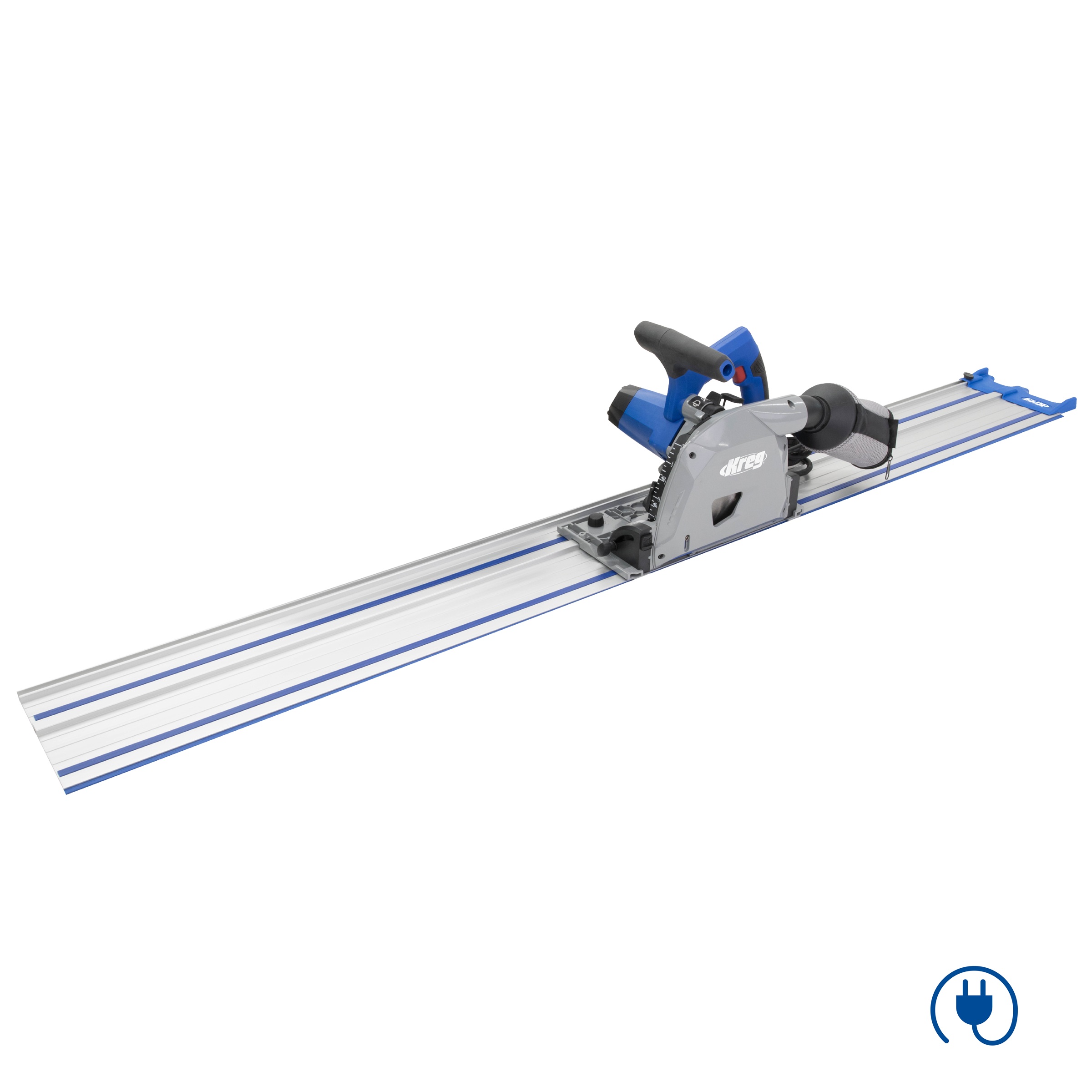A jigsaw is one of the most versatile power tools in woodworking, capable of making straight cuts, curves, and intricate patterns with ease. Learning how to use a jigsaw properly will open up a world of creative possibilities. This guide will walk you through everything you need to know, from choosing the right blade to making precise cuts on various materials. Along the way, you’ll discover expert tips and techniques to enhance your skills and avoid common pitfalls.
What is a Jigsaw? Understanding the Basics
A jigsaw is a handheld power saw with a reciprocating blade that moves up and down to cut through materials. It is commonly used for cutting curves, irregular shapes, and even straight lines when guided correctly. Unlike circular saws or table saws, jigsaws offer greater maneuverability, making them ideal for detailed and intricate cuts.
Key Parts of a Jigsaw
Blade
The cutting component that determines the quality and type of cut.
Shoe (base plate)
Supports the saw on the workpiece and allows for angle adjustments.
Speed control dial
Adjusts the cutting speed based on material type.
Orbital action
A setting that moves the blade in a circular motion for aggressive cuts.
Dust blower
Clears sawdust from cutline for better visibility.
Trigger and lock-on button
Controls the power and allows continuous operation without holding the trigger.
Blade clamp
A quick-release mechanism that secures the blade in place.
Why You Need a Jigsaw
A jigsaw is essential for anyone who wants to make curved cuts, cut holes for pipes and cables, or make quick plunge cuts without pre-drilling. Its lightweight design and ease of use make it ideal for both beginners and experienced woodworkers. You can use it to cut through wood, metal, laminate, and even ceramic tiles, making it a valuable addition to any workshop.
Learn more about what a jigsaw is used for.
Choosing the Right Jigsaw Blade
Blades come in various sizes and materials, each suited for specific tasks. Selecting the right blade ensures clean, accurate cuts and extends the life of both the blade and your jigsaw.
Understanding Teeth Per Inch (TPI)
Low TPI (6-10)
Best for fast, rough cuts in wood.
Medium TPI (10-20)
Ideal for general-purpose cuts.
High TPI (20+)
Provides clean, fine cuts in metal and laminate.
Blade Types for Different Materials
Wood blades
Coarse teeth for fast cutting.
Metal blades
Fine teeth for smooth cuts in metal.
Laminate blades
Reverse-tooth design to reduce chipping.
Ceramic tile blades
Tungsten carbide grit for durability.
Bi-metal blades
Strong and flexible for cutting a variety of materials.
How to Change Jigsaw Blades Safely
- Unplug the jigsaw or remove the battery.
- Release the blade clamp or quick-release mechanism.
- Insert the new blade, ensuring it’s securely locked in place.
- Test by running the jigsaw without cutting to check for proper installation.
- Store and dispose of old blades safely to prevent injury.
Setting Up Your Jigsaw
Before cutting, adjust your jigsaw settings based on your material and desired cut type. Select the appropriate speed and orbital setting, and ensure the base plate is firmly secured. Always double-check that the blade is straight and locked in place before starting.
Preparing Your Work Area and Material
- Use a stable workbench or sawhorses. A secure setup reduces vibration and improves accuracy.
- Secure the material with clamps to prevent movement during cutting.
- Mark your cut line using a pencil and a straightedge or template.
- Wear safety gear (goggles, dust mask, hearing protection).
- Check for obstructions such as nails, screws, or knots in the wood.
- Consider using painter s tape along the cut line to minimize splintering.
Steps to Make a Cut with a Jigsaw
Starting the Saw & Starting a Cut
1. Place the shoe flat on the material without touching the blade.
2. Start the saw at a slow speed before increasing to full speed.
3. Ease the blade into the material using gentle forward pressure.
4. Use a guide rail for long straight cuts to maintain accuracy.
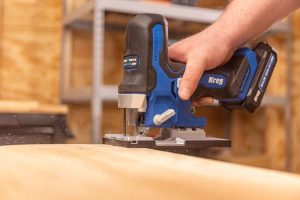
Making Basic Straight Cuts
- Use a guide fence or a straightedge for precision.
- Keep the shoe pressed firmly against the workpiece.
- Let the blade do the work; don’t force it.
- Adjust the orbital setting for faster cuts on thicker wood.
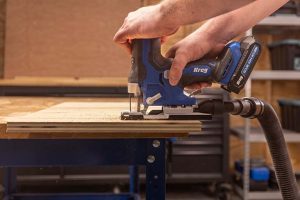
Curve and Circle Cutting
- Use a narrow blade for tight curves.
- Make relief cuts along the curve to prevent binding.
- Rotate the saw gradually while following the cut line.
- Consider using a circle-cutting jig for perfect circles.
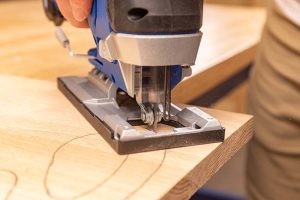
Plunge Cuts and Interior Cutouts
- Tilt the jigsaw forward and start cutting at an angle.
- Gradually lower the blade until it fully engages the material.
- Continue cutting along the marked shape.
- Use a drill to create a starter hole for interior cutouts if needed.
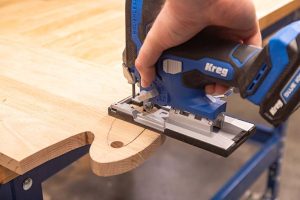
Learn more about how to cut a square notch with a jigsaw:
Learn more about how to cut curves with a jigsaw:
Advanced Cutting Applications
Bevel cutting
- Adjust the base plate to the desired angle (typically up to 45 degrees).
- Use a slower speed for better control.
- Guide the jigsaw steadily through the cut.
- Check the angle with a protractor before cutting.
Using templates and guides
- Secure templates to your workpiece for precise, repeatable cuts.
- Use guide rails for consistently straight cuts.
- Consider printed templates for intricate patterns.
Cutting Different Materials with a Jigsaw
Wood and plywood
- Use medium TPI blades for clean cuts.
- Apply painter’s tape over the cut line to reduce splintering.
- Cut with the good side facing down to minimize tear-out.
Metal and sheet metal
- Use a high-TPI bi-metal blade.
- Apply cutting oil to prevent overheating.
- Secure thin metal sheets between plywood for stability.
Laminate and countertops
- Use a reverse-tooth blade to prevent chipping.
- Cut from the back side to minimize visible tear-out.
- Apply masking tape for added protection.
Ceramic tile
- Use a tungsten carbide blade.
- Cut slowly to avoid cracking.
- Keep on eye on the temperature of the blade and apply water as needed.
Expert Tips for Perfect Cuts with a Jigsaw
Preventing splintering
- Use masking tape along the cut line.
- Cut with the good side of the material facing down.
- Choose a fine-tooth blade for cleaner cuts.
Managing blade deflection
- Keep a firm grip on the saw to maintain a straight path.
- Use slower speeds for thicker materials.
- Apply even pressure without forcing the blade
Using cutting guides and fences
- Attach a straight guide to maintain precision during long cuts.
- Creating templates will make it easy to get repeatable curved cuts.
Speed control techniques
- Adjust the speed based on the material and blade type.
- Use lower speeds for detailed work and higher speeds for fast cuts.
Safety Tips When Using a Jigsaw
- Always wear protective gear.
- Keep hands and fingers away from the blade path.
- Unplug the saw or remove the battery before changing blades.
- Use clamps to secure the material.
- Ensure the work area is well-lit.
Common Mistakes to Avoid with a Jigsaw
- Using the wrong blade for the material.
- Applying too much force, causing blade deflection.
- Not securing the workpiece, leading to material movement.
- Cutting before the blade is up to speed.


